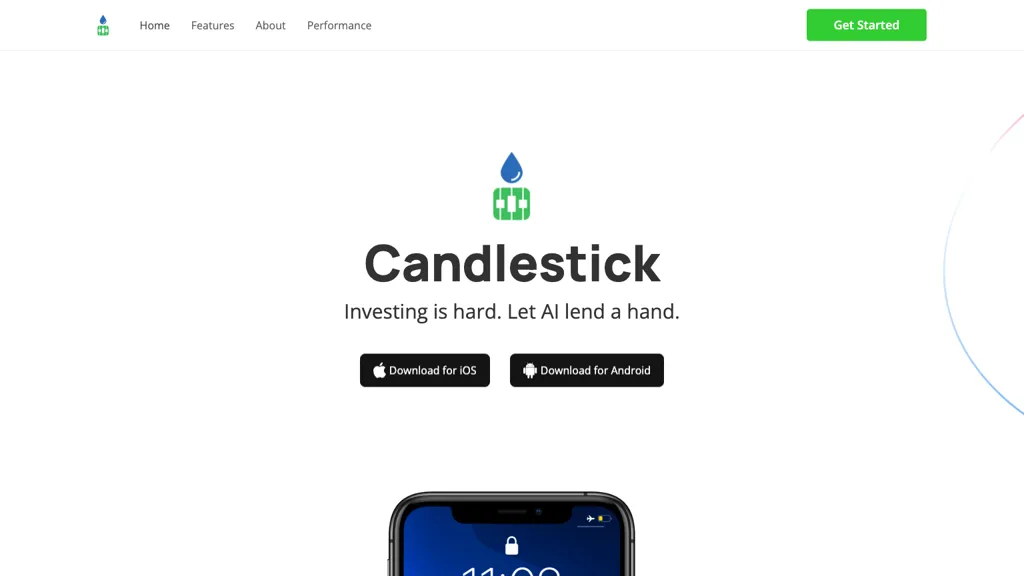Top 10 Tips To Evaluate Ai And Machine Learning Models For Ai Stock Predicting/Analyzing Platforms
Examining the AI and machine learning (ML) models used by stock prediction and trading platforms is vital in order to ensure that they are accurate, reliable and actionable information. Incorrectly designed models or those that oversell themselves can result in faulty forecasts and financial losses. These are the top ten tips to evaluate the AI/ML models used by these platforms:
1. Learn about the purpose of the model and the way to apply it.
A clear objective: determine whether the model was created for short-term trading, long-term investing, sentiment analysis or for risk management.
Algorithm Transparency: Verify if the platform reveals what kinds of algorithms they employ (e.g. regression, neural networks of decision trees or reinforcement-learning).
Customizability: Assess if the model can be customized to suit your particular trading strategy or risk tolerance.
2. Evaluation of Model Performance Metrics
Accuracy: Check the model's prediction accuracy however, don't base your decision solely on this measure, since it may be inaccurate in the financial market.
Recall and precision - Assess the ability of the model to detect genuine positives while minimizing false positives.
Risk-adjusted Returns: Determine if a model's predictions produce profitable trades taking risk into consideration (e.g. Sharpe or Sortino ratio).
3. Test the model using Backtesting
The backtesting of the model using historical data allows you to test its performance against prior market conditions.
Testing outside of sample: Make sure your model has been tested on data that it wasn't used to train on in order to avoid overfitting.
Scenario analysis: Test the model's performance under various market conditions (e.g. bear markets, bull markets, high volatility).
4. Be sure to check for any overfitting
Overfitting signals: Watch out models that do extraordinarily well with data training, but not so well on data that is not seen.
Regularization Techniques: Examine to see if the platform is using techniques such as regularization of L1/L2 or dropout to avoid overfitting.
Cross-validation. Make sure the platform is performing cross validation to determine the generalizability of the model.
5. Examine Feature Engineering
Relevant features: Verify that the model is based on meaningful features (e.g. price volumes, technical indicators and volume).
Features selected: Select only those features which have statistical significance. Avoid redundant or irrelevant data.
Dynamic updates of features Check to see if over time the model adapts itself to new features, or market changes.
6. Evaluate Model Explainability
Interpretability - Make sure that the model gives explanations (e.g. values of SHAP, feature importance) to support its claims.
Black-box model Beware of applications that use models that are too complex (e.g. deep neural network) without describing methods.
User-friendly Insights: Make sure that the platform provides actionable insight in a format traders are able to easily comprehend and utilize.
7. Examining Model Adaptability
Changes in the market. Examine whether the model can adapt to the changing conditions of the market (e.g. an upcoming regulations, an economic shift, or a black swan event).
Continuous learning: Find out if the platform continuously updates the model with new data. This can boost performance.
Feedback loops. Be sure the model incorporates the feedback of users and actual scenarios to enhance.
8. Check for Bias, Fairness and Unfairness
Data bias: Verify that the training data are representative of the market, and are free of bias (e.g. overrepresentation in certain segments or time frames).
Model bias: Determine if the platform actively monitors and mitigates biases in the predictions made by the model.
Fairness: Make sure the model doesn't unfairly favor or disadvantage certain sectors, stocks or trading styles.
9. Evaluation of the computational efficiency of computation
Speed: See whether the model can make predictions in real-time or with minimal delay. This is crucial for traders with high frequency.
Scalability - Ensure that the platform is able to handle huge datasets, many users, and does not affect performance.
Resource usage: Make sure that the model has been optimized to make efficient use of computational resources (e.g. GPU/TPU use).
Review Transparency & Accountability
Model documentation - Make sure that the platform has detailed details on the model including its design, structure as well as training methods, as well as limits.
Third-party validation: Find out whether the model has been independently verified or audited by an outside party.
Check if there are mechanisms in place to detect errors and malfunctions in models.
Bonus Tips
Case studies and user reviews: Use user feedback and case study to evaluate the actual performance of the model.
Trial time: You can utilize an demo, trial or free trial to test the model's predictions and usability.
Customer support: Ensure your platform has a robust support for problems with models or technical aspects.
If you follow these guidelines, you can examine the AI/ML models on stock predictions platforms and ensure that they are reliable as well as transparent and linked to your trading goals. Have a look at the best chatgpt copyright info for more advice including ai trade, options ai, trading ai, investing ai, using ai to trade stocks, options ai, ai chart analysis, ai trading tools, ai for stock trading, ai investing platform and more.

Top 10 Tips For Risk Management Of Ai Trading Platforms That Predict/Analyze Stock Prices
A platform for trading that makes use of AI to analyze and predict stocks should have a robust risk management system. This can protect your capital, and help reduce any possible losses. A platform with robust tools for managing risk will aid in the navigating of unstable markets and help you to make educated decisions. Here are 10 top suggestions to help you analyze the risk management capabilities of these platforms.
1. Review Stop-Loss Features and Take-Profit Features
Customizable level: You should be able to customize the take-profit/stop-loss levels of your the individual strategies and trades.
Trailing stops: Find out if the platform you are using supports trailing stop that automatically adjust when the market shifts in your favor.
Guarantees on stop-loss: find out if the platform offers stop-loss assurances, which assure that your trade will close at a certain price, even in volatile markets.
2. Use Position Sizing Tools to Assess Positions
Fixed amount. Be sure to can define your position sizes in terms of an amount that is fixed in dollars.
Percentage of portfolio: Check if you can set position sizes as a percentage of your overall portfolio to manage risk proportionally.
Risk-reward ratio: Check to see if it is possible to define the risk-reward percentages for specific strategies or trades.
3. Check for Diversification Assistance
Multi-asset trading. Check that your platform can handle different asset classes like ETFs and Forex, Options, and Stocks.
Sector allocation: Make sure the platform includes tools to monitor the exposure of different sectors.
Geographic diversification: Make sure that the platform supports trading in international markets in order to spread geographical risk.
4. Evaluation of Leverage and Margin controls
Margin requirements: Ensure that the platform is clear about limitations on margins when trading leveraged.
Make sure your platform lets you to set limits on leverage in order to limit risk exposure.
Margin calls: Check if the platform provides timely margin call notifications to prevent account liquidation.
5. Assess the Risk Analytics Reporting
Risk metrics: Be sure the platform has key risk metrics to your portfolio (e.g. Value at Risk (VaR), sharpe ratio, and drawdown).
Scenario analysis: Find out if the platform allows users to create different market scenarios to assess possible risks.
Performance reports: Make sure you check whether the platform offers detailed performance reports, including risk-adjusted returns.
6. Check for Real-Time Risk Monitoring
Portfolio monitoring: Ensure that the platform allows real-time monitoring of the risk exposure in your portfolio.
Alerts and notifications - Verify that the platform is sending out real-time alerts when risks occur (e.g. margin breaches, triggers for stop-loss orders).
Take a look at the dashboards for risk. If you want to see a complete picture of your risks, be sure that they're configurable.
7. How do you evaluate Stress Testing & Backtesting
Test your strategies for stress: Ensure that the platform you select allows you to test your strategies and portfolio under extreme market conditions.
Backtesting - Check to see if your platform allows you to backtest your strategies using previous information. This is a fantastic method to gauge the risk and evaluate the performance.
Monte Carlo: Verify the platform's use of Monte Carlo-based simulations for assessing the risks and modeling a range of possible outcomes.
8. Risk Management Regulations: Assess compliance
Ensure that the platform meets the regulatory compliance requirements (e.g. MiFID II regulations in Europe, Reg T regulations in the U.S.).
Best execution: Verify if the platform is in line with the best execution practices, making sure that trades are executed at the most competitive available price to minimize slippage.
Transparency Check the platform's transparency and the clarity of risk disclosure.
9. Examine the User-Controlled Risk Parameters
Custom risk rule: Make sure whether your platform lets you define custom risk management guidelines (e.g. the maximum daily loss, or maximum size of the position).
Automated Risk Controls: Find out if the platform is able to enforce the risk management policy that are based on parameters pre-defined.
Verify if the platform allows manual overrides to automated risk control.
Review Case Studies and User Feedback
Review by users: Conduct user research to determine the platform's efficiency in risk management.
The case studies or testimonials must highlight the platform’s capability to handle risk.
Community forums: Check if a platform has an active community of users who are willing to share strategies and strategies to manage risk.
Bonus Tips
Trial period: You can make use of a demo or a no-cost trial to try out the risk management features of the platform.
Customer support: Make sure the platform offers a solid assistance for any questions or issues that are related to managing risk.
Educational resources: See whether the platform has education resources or videos regarding risk management best practices.
These tips will help you determine the risk management capabilities of AI stock-Predicting/Analyzing trading platforms. In this way you'll be able pick a platform that safeguards your investment and reduces the risk of losses. Tools for managing risk that are reliable are crucial for trading on unstable markets. Take a look at the top rated best AI stocks for blog advice including ai trading tool, AI stock investing, chart analysis ai, ai for trading stocks, chart ai trading, how to use ai for stock trading, ai software stocks, stocks ai, AI stock investing, invest ai and more.

Comments on “20 Free Suggestions For Picking AI Stock Picking Platforms”